Build or Die: Why Custom Software Is No Longer Optional
Stop adapting your business to fit generic software. Learn how custom engineering solutions can eliminate inefficiencies, boost productivity, and create your unfair market advantage.

Your business deserves better. We've entered an era where technology isn't just supporting business - it's become the primary battleground for competitive advantage. Yet too many companies are still trying to shoehorn their unique operations into pre-packaged software that was never designed for their specific challenges.
This is a mistake. A costly one.
At 1985, we've spent over a decade watching businesses struggle with this reality. Some adapt their operations to fit their software rather than the other way around. Others cobble together a patchwork of disparate systems that never quite talk to each other properly. The result? Inefficiency. Frustration. Missed opportunities.
The Hidden Cost of Generic Solutions
Most businesses don't realize they're bleeding money until it's too late. The CFO sees the monthly subscription fees for off-the-shelf software and thinks, "What a bargain compared to custom development." But beneath that apparent saving lurks a different reality.
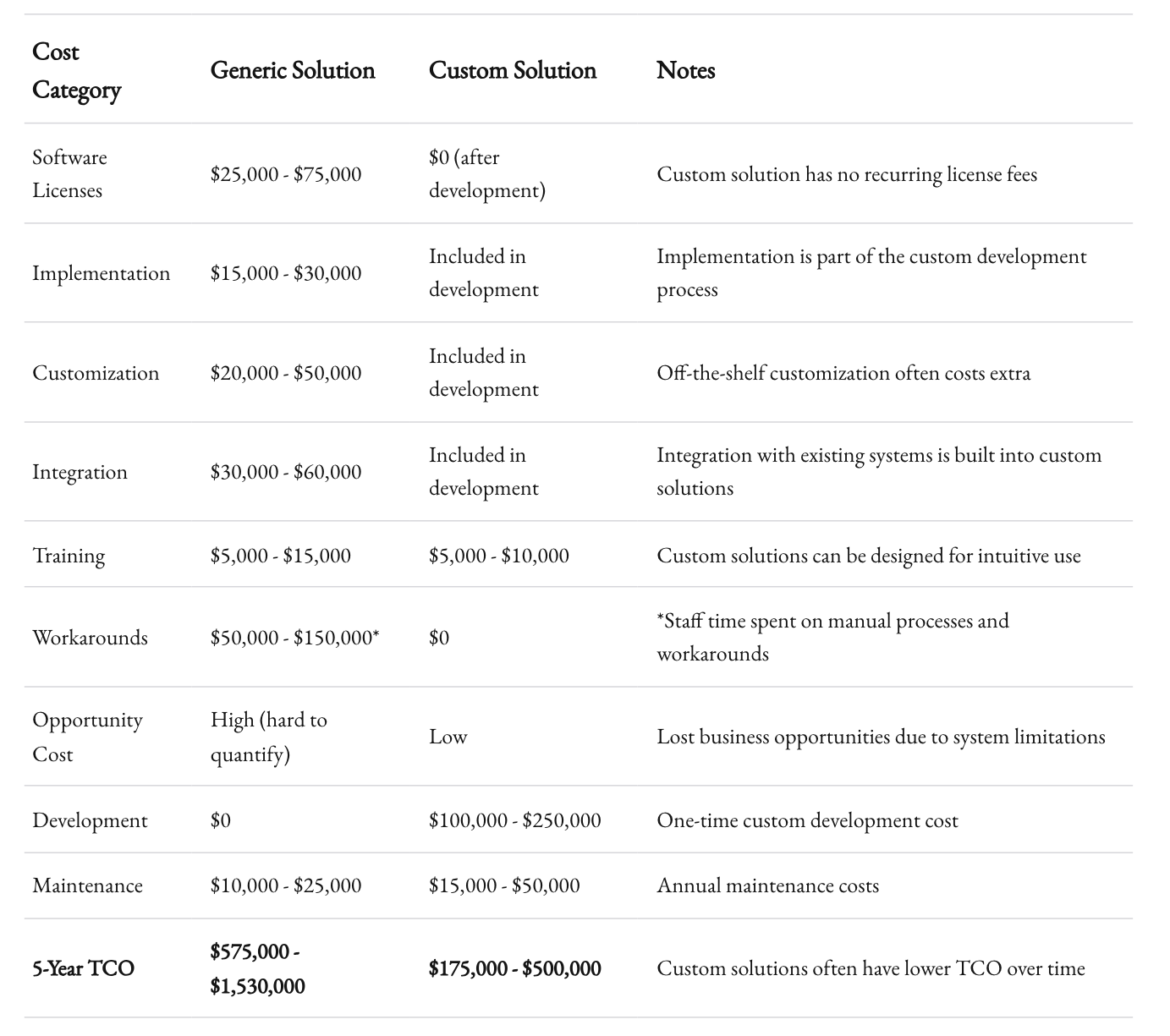
Your team spends hours each week manually transferring data between systems that don't integrate. Your sales process includes unnecessary steps because your CRM wasn't built for your specific workflow. Your customer service reps toggle between five different applications to answer a single customer query.
These inefficiencies aren't just annoying—they're expensive. A mid-sized company can easily waste $300,000 annually in lost productivity due to poorly fitting software. I've seen it happen repeatedly across industries.
And that's before we even talk about the opportunity cost. While you're wrestling with workarounds, your competitors who invested in purpose-built systems are moving faster, responding more nimbly to market changes, and delivering superior customer experiences.

Custom Software: Strategic Investment, Not Expense
The mental shift that needs to happen is viewing custom software not as a cost center but as a strategic asset that generates returns over time.
When EMOD Safety came to us, they were struggling with traditional paper-based safety reporting in the construction industry. Workers were spending up to 4 hours daily on paperwork. Information was reaching decision-makers too late to prevent problems.
Within 6 months of deploying their custom safety management platform, report completion time dropped from 45 minutes to 11 minutes per incident. Emergency notification delays were cut from 2.5 hours to under 5 minutes. They've seen a 22% reduction in workplace incidents and saved an estimated $1.5 million in potential litigation costs.
That's not an expense. That's an investment with measurable returns.
Custom software becomes your unfair advantage—a proprietary system that competitors can't simply purchase off the shelf.

The Evolution of Custom Software Development
Custom software has come a long way from the expensive, time-consuming behemoths of the past. The playing field has changed dramatically in three key ways:
1. Modern Development Methodologies
Gone are the days of waiting 18 months for your software to be ready, only to discover it doesn't meet your needs. Using agile development, we deliver working software in manageable sprints—typically 2-4 weeks. You see tangible progress quickly and can provide feedback that shapes the ongoing development.
This iterative approach significantly reduces the risk of project failure. You're not betting everything on a big reveal months down the road.
2. Componentized Architecture
Today's custom software is built with modularity in mind. Each function is a discrete component that can be developed, tested, and deployed independently. Need to add a new feature six months from now? No problem—the system was designed for expansion.
This approach also means you can prioritize the most critical components first, getting value faster while spreading the investment over time.
3. Cloud-Native Design
Modern custom applications are designed for the cloud from day one. This brings unprecedented scalability, reliability, and accessibility. Your software can grow seamlessly with your business without the painful migrations and downtime of the past.
Cloud-native design also means your team can access the system from anywhere, on any device—something that became critical during recent global shifts to remote work.
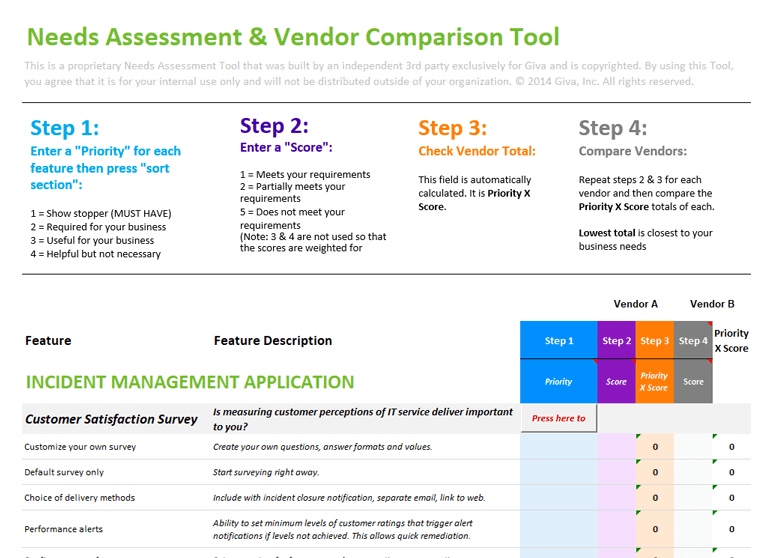
Signs Your Business Needs Custom Software
Not every business needs custom solutions. But if you recognize three or more of these signs, it's time for a serious conversation about custom development:
- Your team regularly creates workarounds or manual processes to compensate for software limitations
- You're managing critical business functions in spreadsheets because your current systems can't handle them
- You've customized your off-the-shelf solution to the point where upgrades are difficult or impossible
- Your business has unique workflows or processes that don't fit standard software models
- Data silos are preventing you from getting a complete view of your operations or customers
- You've identified opportunities for automation or optimization but lack the right tools to implement them
- Your industry has specific compliance or security requirements that generic solutions don't adequately address
- You're losing competitive edge because everyone in your industry uses the same standard tools
The cost of inaction often exceeds the investment in custom solutions. One client came to us after spending three years and over $200,000 trying to make a popular enterprise CRM work for their specialized sales process. Within six months of implementing a custom solution, they increased close rates by 32%—paying for the development costs within the first year.

Elements of Successful Custom Software Projects
After delivering dozens of custom projects across industries, we've identified several critical factors that distinguish successful implementations:
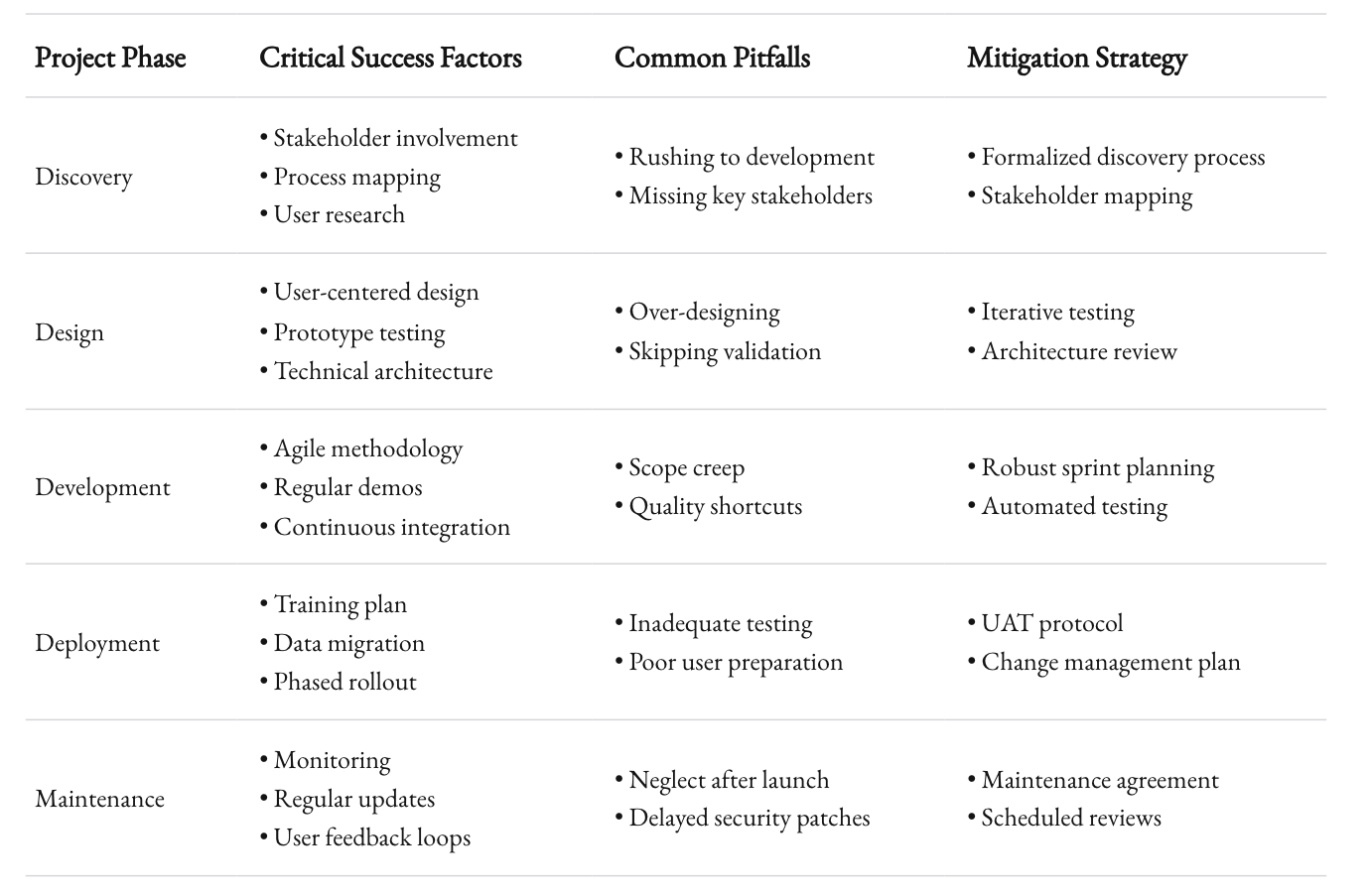
1. Start with Discovery, Not Development
The single biggest predictor of project success is a thorough discovery phase. Before writing a single line of code, we immerse ourselves in your business processes, pain points, and objectives.
This isn't just about gathering requirements—it's about understanding the "why" behind them and identifying opportunities you might not have considered.
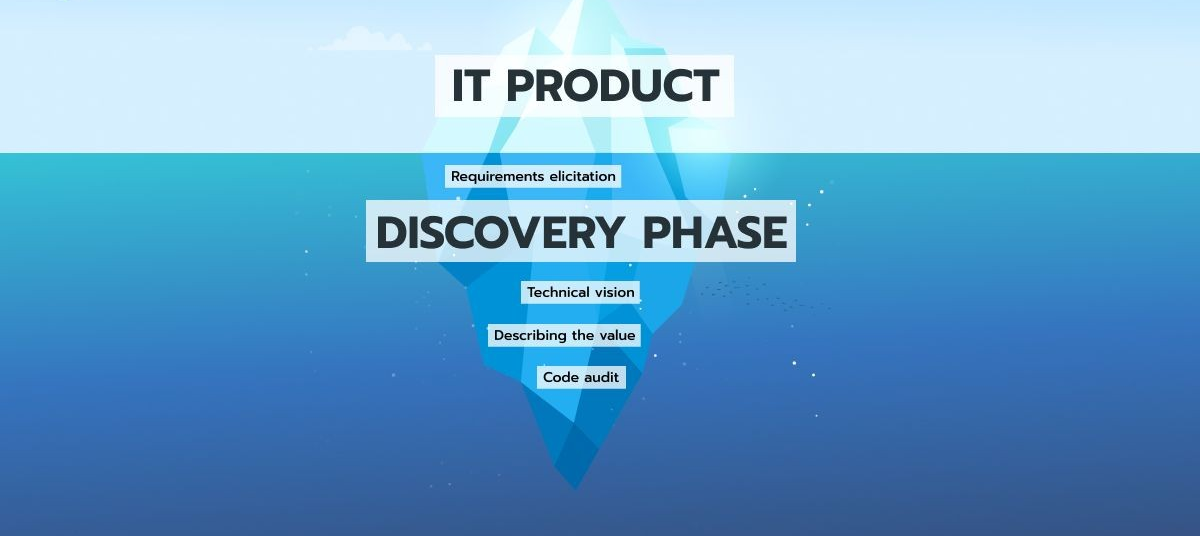
For the CalUp event management platform, our discovery phase revealed that their initial focus on registration efficiency was only addressing 30% of the actual pain points. The bigger opportunities were in attendee engagement and post-event analytics. This insight completely shifted our development priorities and delivered significantly more value.
2. Embrace Iterative Development
The waterfall approach to software development (specify everything upfront, then build it all) is a recipe for failure in today's fast-moving business environment.
Instead, define an MVP (Minimum Viable Product) that delivers core value quickly, then iterate based on real-world feedback. This approach ensures your software stays aligned with evolving business needs and reduces the risk of building features that sound good on paper but don't work in practice.

With the Grape fashion discovery platform, we launched a basic version to 5,000 beta users within three months. Their feedback dramatically reshaped our roadmap, eliminating several planned features that users didn't actually want while highlighting opportunities we hadn't initially considered.
3. Design for Scale from Day One
Nothing is more frustrating than building a successful application only to watch it crash under its own weight as usage grows. Modern custom software should be architected for scale from the beginning, even if you're starting small.
This doesn't mean overbuilding, but rather making architectural choices that allow for seamless growth. Cloud-native design, microservices architecture, and proper database indexing are just a few examples of scale-friendly approaches that don't significantly increase initial development costs.
When Stockal approached us for their global investing platform, they projected 10,000 users within the first year. We designed the system to handle 100,000. Good thing, too—they hit 75,000 users in just nine months.
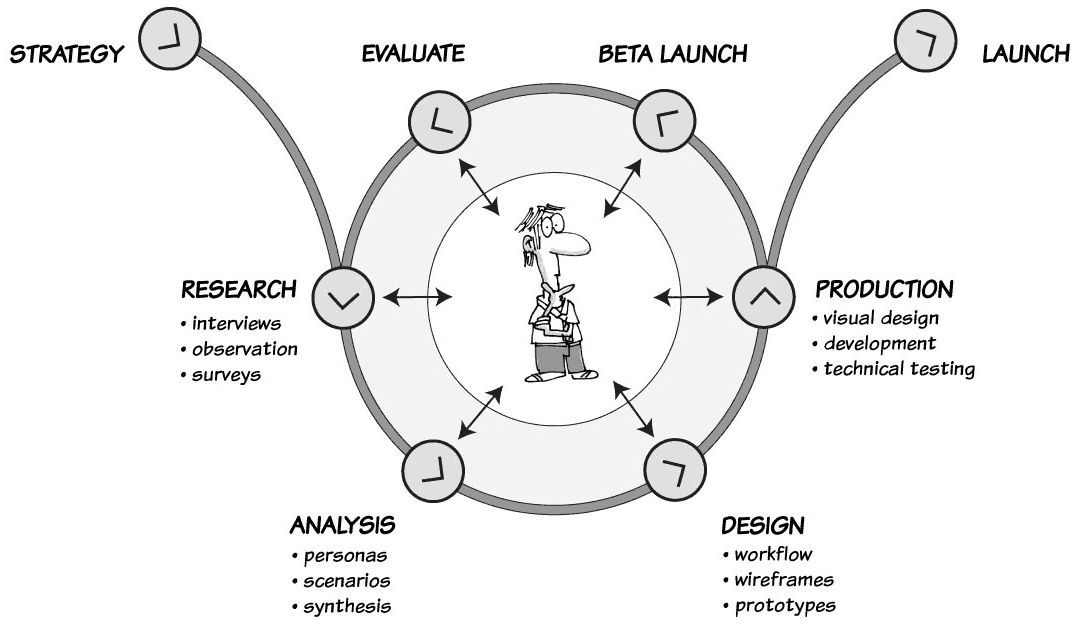
4. Prioritize User Experience
The most sophisticated back-end functionality is worthless if users find the interface confusing or frustrating. User experience design isn't a luxury—it's essential to software adoption and effectiveness.
We incorporate UX design from the earliest stages, creating wireframes and prototypes that stakeholders and actual end users can test before development begins. This approach catches usability issues when they're still cheap to fix.
For EMOD Safety's construction safety app, we conducted field testing with actual construction workers, many of whom had limited technical expertise. Their feedback dramatically simplified the interface, resulting in 95% user adoption within the first month—far above the industry average of 60% for new technology implementations.

Common Pitfalls to Avoid
Custom software projects can transform your business, but they're not without risks. Here are the most common pitfalls we've observed and how to avoid them:
Scope Creep
The project that never ends because requirements keep expanding is a classic problem. The solution isn't rigid scope control but rather a flexible development approach combined with clear prioritization.
We use the MoSCoW method (Must have, Should have, Could have, Won't have) to categorize features and maintain focus on delivering core value first. This approach keeps projects moving forward while still allowing for evolution.
Overengineering
Engineers love elegant, comprehensive solutions. But sometimes simple is better, especially when time and budget are factors.
We emphasize pragmatic solutions that solve today's problems effectively while building in enough flexibility to adapt to future needs. Perfect shouldn't be the enemy of good.
Neglecting Maintenance
Custom software isn't a "build it and forget it" proposition. Like any complex system, it requires ongoing maintenance and occasional updates to remain secure and effective.
We recommend budgeting 15-20% of the initial development cost annually for maintenance, updates, and minor enhancements. This investment protects your larger investment and ensures your software continues delivering value for years.
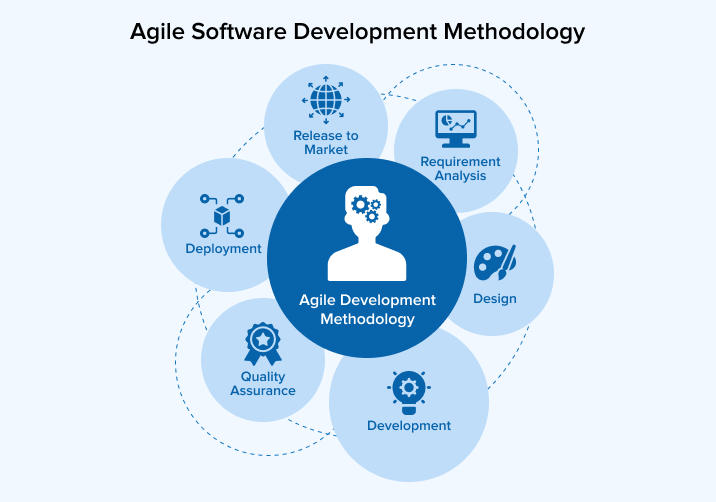
The 1985 Approach to Custom Software Engineering
After 12 years in the industry, we've refined a development approach that maximizes value while minimizing risk:
- Deep Discovery: We spend significant time understanding your business, users, and objectives before proposing solutions.
- Collaborative Design: We work closely with your team to design solutions, using wireframes and prototypes to validate ideas early.
- Agile Development: We build in short sprints, delivering working software every few weeks for feedback and adjustment.
- Quality Assurance: Rigorous testing throughout the process, not just at the end, catches issues early when they're easier to fix.
- Ongoing Partnership: We view our relationship as a long-term partnership, not a one-off project. Your success is our success.
Our founder, Sharath, personally engages with clients throughout the discovery phase, ensuring that the technical architecture aligns perfectly with your business objectives. This hands-on approach from leadership distinguishes us from larger firms where you might never meet the people designing your solutions.
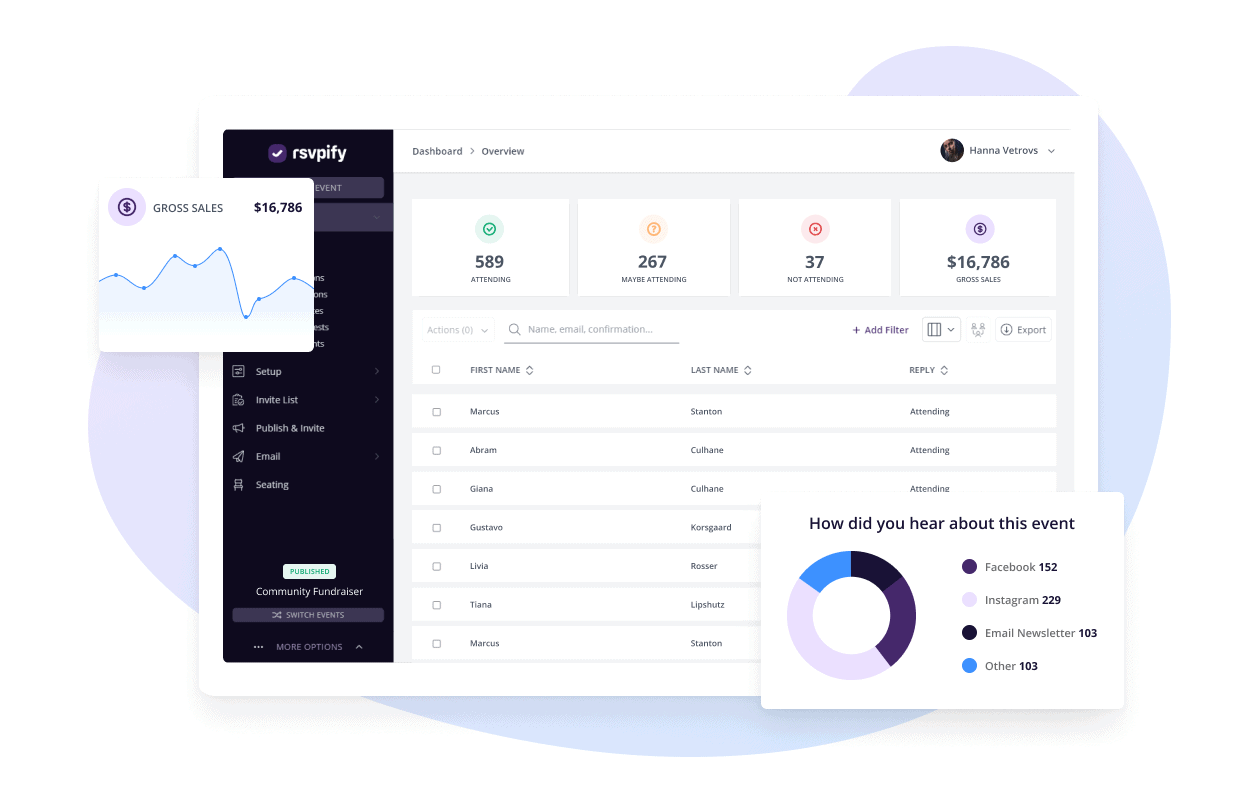
Case Study: Transforming Event Management with Custom Software
To illustrate the impact of custom software, let's examine how we helped CalUp revolutionize corporate event management:
Challenge: CalUp approached us with a vision to simplify the complex process of planning, executing, and analyzing corporate events. Existing solutions were either too simplistic for enterprise needs or too cumbersome to use effectively.
Approach: After a thorough discovery phase, we identified three key areas for innovation:
- Unified event command center to replace the 7+ tools companies were typically using
- AI-driven attendee management for events with 1000+ participants
- Comprehensive analytics to measure ROI and attendee engagement
Solution: We developed a cloud-native platform with both web console and mobile apps (iOS/Android), integrating with existing enterprise systems through APIs. The platform was built using Node.js, React Native, and AWS services for maximum scalability.
Results:
- 70% reduction in event planning time
- 99% accuracy in attendee management (up from 85%)
- 40% increase in attendee satisfaction scores
- 35% increase in event budget approvals due to clear ROI metrics
- Onboarded 50 enterprise clients in the first year, including 5 Fortune 100 companies
This transformation wasn't just about digitizing existing processes—it fundamentally changed how these companies approached events, turning them from cost centers into strategic business tools.
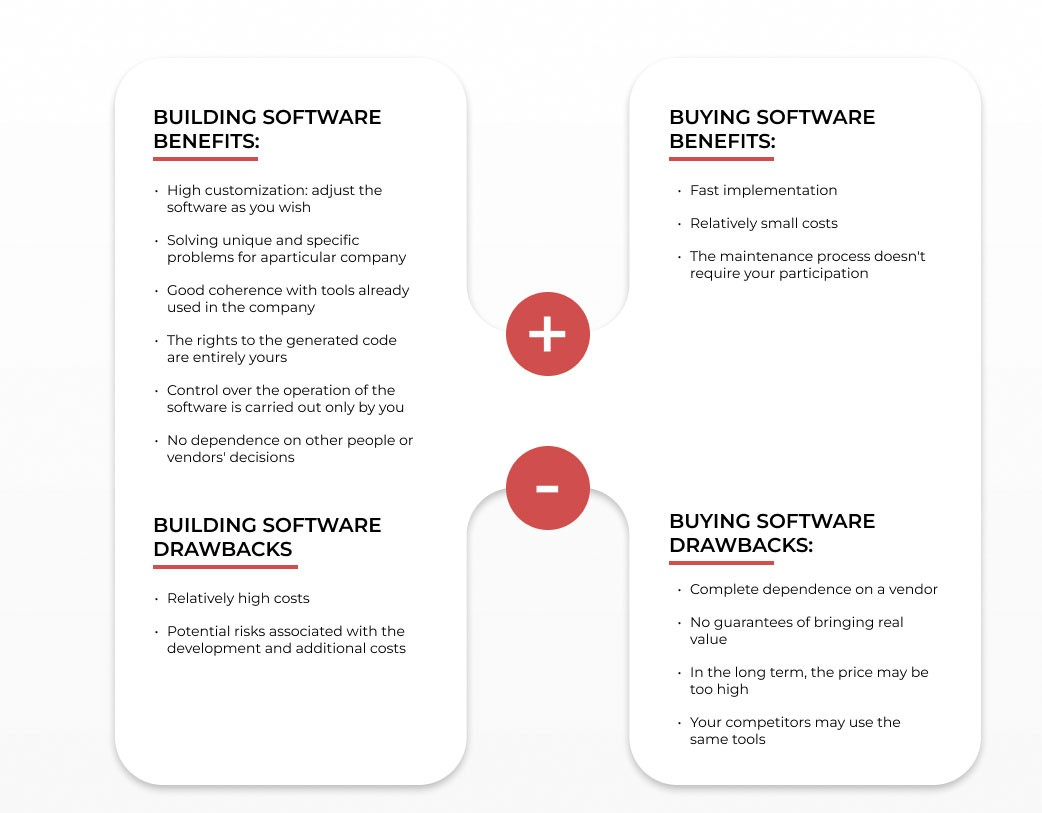
Making the Decision: Build vs. Buy
The decision between custom development and off-the-shelf solutions isn't always clear-cut. Here's a framework we use to help clients evaluate their options:
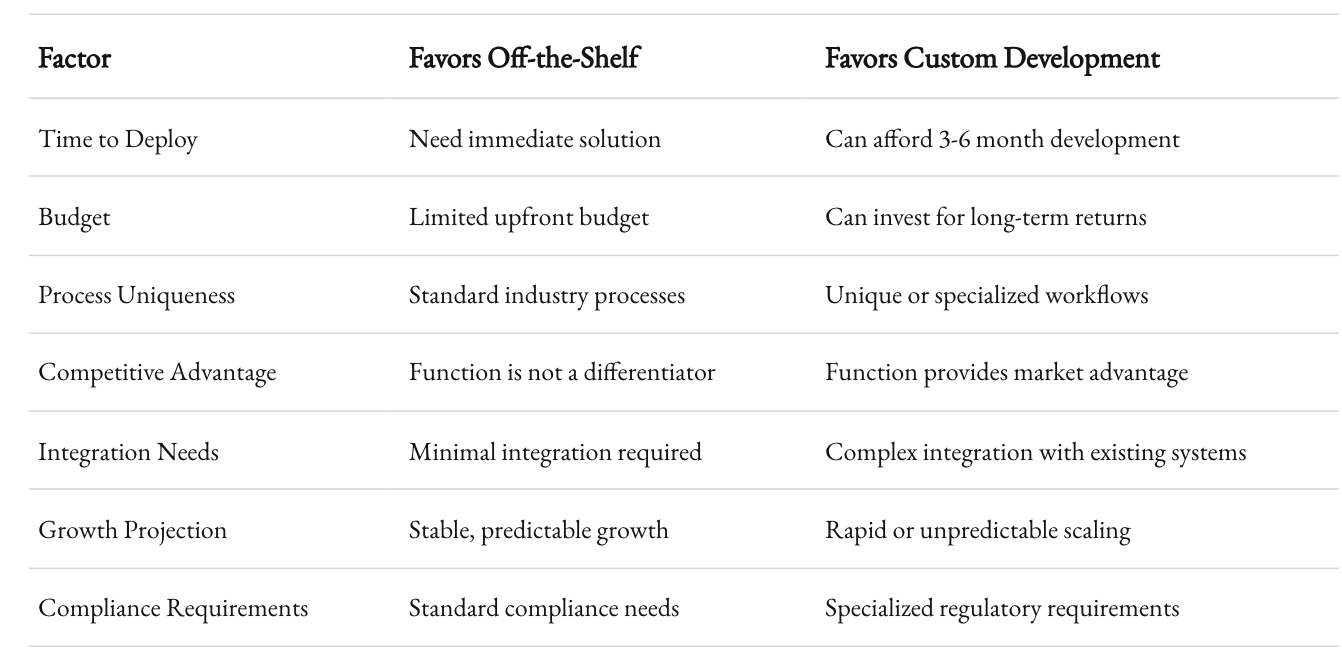
Most businesses end up with a hybrid approach—using off-the-shelf solutions for standardized functions (like accounting) while investing in custom development for core operations that differentiate their business.
The key is making these decisions strategically rather than defaulting to the seemingly cheaper option without considering the total cost of ownership and opportunity cost.

The Future of Custom Software Engineering
As we look ahead, several trends are reshaping the custom software landscape:
AI Integration
Artificial intelligence isn't just for tech giants anymore. We're increasingly embedding AI capabilities into custom applications for tasks like document processing, customer service automation, and predictive analytics.
For Pukka Life's Ayurveda consultation platform, we implemented an AI-driven recommendation engine that analyzes customer health profiles and suggests personalized wellness regimens. This feature has increased customer engagement by 42% and subscription renewals by 28%.
Low-Code/No-Code Components
While pure low-code platforms rarely meet complex business needs, we're leveraging low-code components within custom applications to accelerate development and empower business users to make certain changes without IT support.

This hybrid approach gives you the best of both worlds—custom functionality where it matters most, combined with the speed and flexibility of low-code for appropriate components.
Edge Computing
As IoT devices proliferate, processing data at the edge (closer to where it's generated) rather than sending everything to the cloud is becoming increasingly important.
For EMOD Safety's construction safety platform, we implemented edge computing capabilities that allow the mobile app to function fully offline at remote construction sites, syncing data when connectivity is restored.

Taking the First Step
If you're considering custom software, start with these steps:
- Identify Your Pain Points: Document the specific challenges your current software isn't addressing.
- Quantify the Impact: Estimate the cost of these pain points in terms of time, money, missed opportunities, and competitive disadvantage.
- Explore Options: Schedule a consultation with a custom software provider like 1985 to discuss potential approaches and ballpark investment.
- Start Small: Consider beginning with a focused solution to a specific problem rather than attempting to replace all your systems at once.
Custom software isn't right for every business or every function. But when applied strategically to areas where your processes are unique or provide competitive advantage, it can transform your operations and create sustainable market differentiation.
In today's technology-driven business landscape, the right custom software isn't a luxury—it's a strategic imperative. The question isn't whether you can afford to invest in custom solutions, but whether you can afford not to.
As the founder of 1985 Software Solutions, Sharath Shambu has guided dozens of companies through digital transformation. With over 12 years in the industry, he specializes in helping businesses leverage technology to create sustainable competitive advantages.



